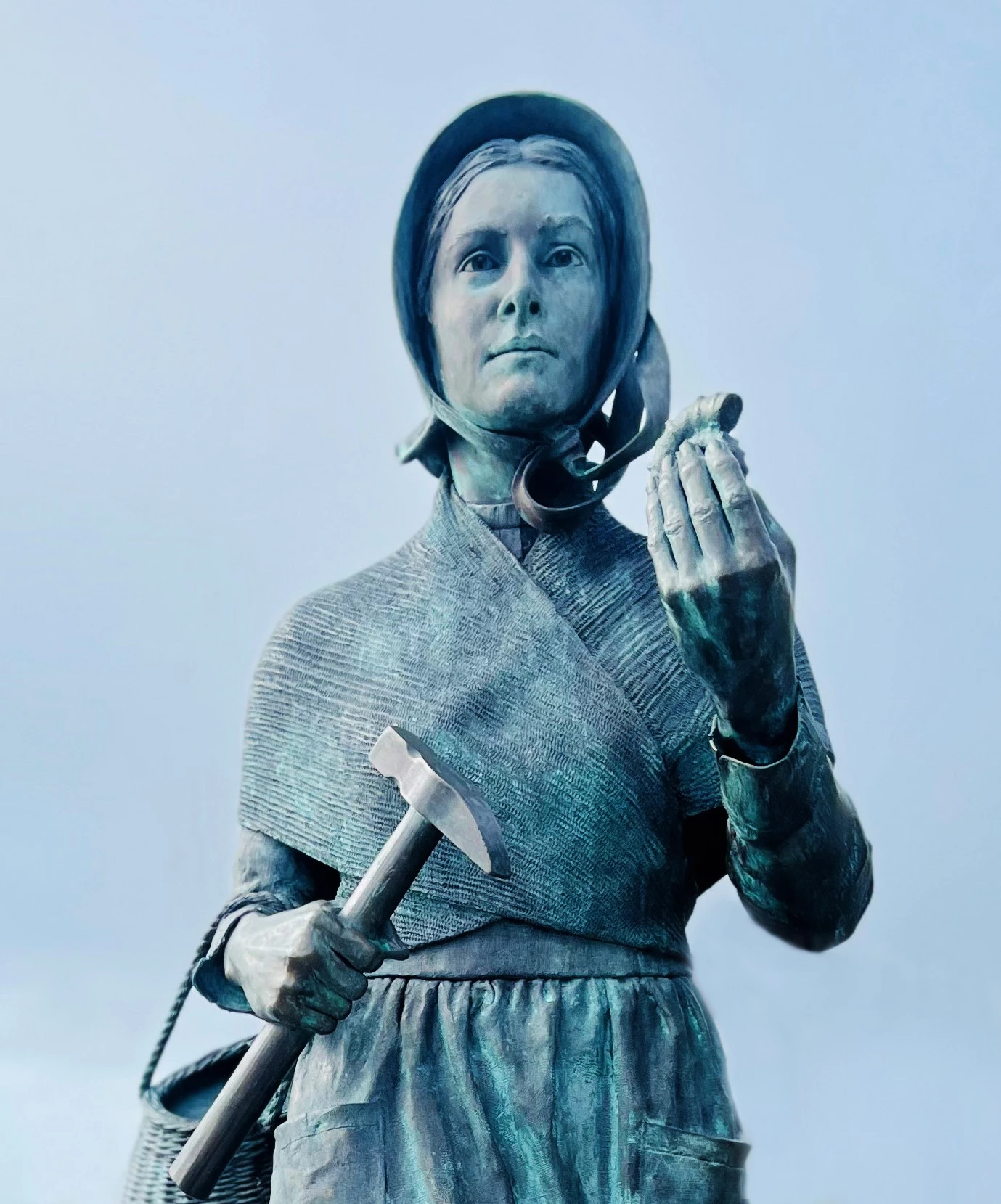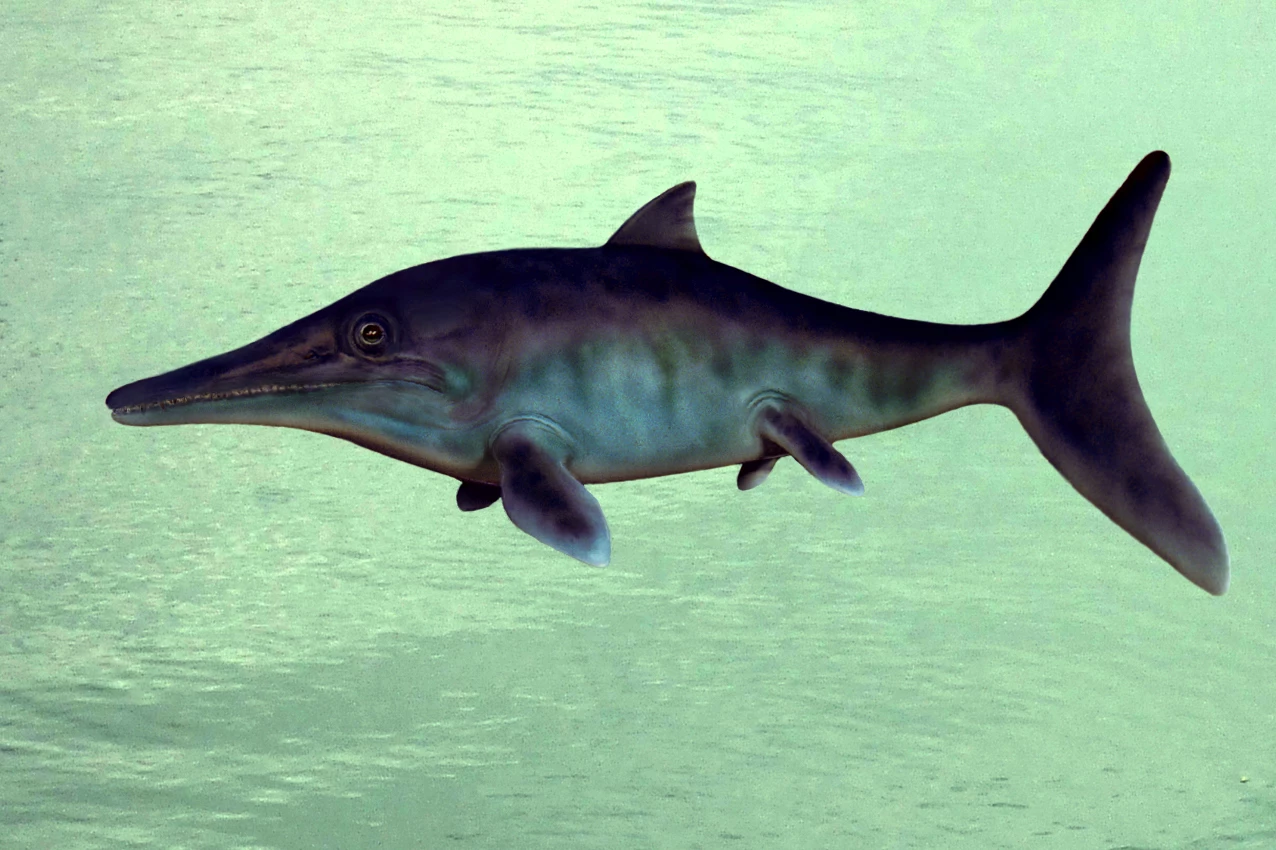Mary Anning – pioneering fossil collector
, 2 March 2023
Mary Anning is remembered as an iconic woman from the early 19th Century. Despite her working-class origins, she made scientific discoveries that equalled any made by male geologists of the time.
Mary was born on 21st May 1799 in the little town of Lyme Regis, in Dorset. Her father was a carpenter who died when she was just 11 years old leaving the family with debts and no steady income. They had been supplementing their income by collecting and selling fossils to tourists for a number of years, and young Mary became extremely good at this. She had an excellent eye for spotting small portions of fossilized bone in rocks, and developed the skill of delicately extracting them using hammer and chisel. Her mother Molly took over the business of selling the fossils, and between them they developed a successful shop which attracted visiting tourists and scientists. It was hard work collecting fossils from the beach in all weathers, then taking them back to be cleaned up and sold.
When Mary was 12, she and her brother Joseph found parts of a 5m long reptile skeleton. This was bought for the price of £23 (about 6 months wages for a labourer at the time). Up to this time, all large reptilian fossils found nearby were thought to be the remains of crocodiles, as no other large animals of this type were known. Mary’s specimen was studied by various scientists and formed the basis of work on a new type of marine reptile called an ichthyosaur (meaning fish-lizard).
Over the next few decades Mary found many new and unusual fossils, including the first plesiosaur, the first pterosaur (flying reptile) outside Germany, and several new fish. Her clever observation of what she was finding enabled her to interpret finds in new ways. No-one knew the origins of the common, twisted lumps of hard rock called bezoar stones, but Mary saw their close association to ichthyosaur skeletons and worked out that they must be the fossilized remains of their droppings – we now call them coprolites. Her fame spread widely and soon she was being visited and consulted by leading geologists.
Mary was a curious character who didn’t fit into any regular categories. She had only a few years of schooling in the local Sunday school yet was able to write well and express herself fluently. However, her class meant she was unable to mix socially with her intellectual equals. As a woman, she was totally barred from joining the Geological Society of London where she would have been able to share and discuss her scientific ideas. Also, although her name is mentioned in scientific papers, she was never included as one of the authors.
She was described as independent, confident, proud and opinionated, and her letters show she felt bitter about the circumstances of her life. Yet she could also be kind and generous and helped many local townspeople when she could.
Visitors to Lyme have been able see Mary Anning’s gravestone and the stained-glass window dedicated to her memory in the church, but it was only in 2022 that a statue of her was unveiled. This was the culmination of a remarkable campaign started when nine-year old Evie Swire asked her mother Anya Pearson where there was a statute of Mary, only to be told there wasn’t one. This sparked the foundation of Mary Anning Rocks which crowdfunded over £100,000 to pay for a statue. Artist Denise Dutton was commissioned to create the sculpture which can now been seen at the sea front, depicting Mary striding purposefully toward the beach with her dog ready to make exciting new finds.


